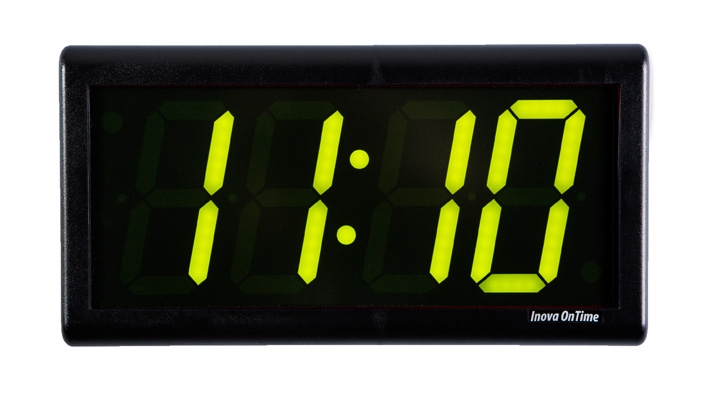
Okay, maybe I am overselling this blog by calling statistics ‘interesting’. Most people get bored just by hearing the word ‘statistics’, but, I am going to try to change your mind about this topic by avoiding medically serious statistics. Through circumstances, I have become accustomed to many of these worthy stats because firstly, they informed the doctors and guided them to take care of me; and secondly, they became for my family and me a kind of short-hand means of discussing my progress: What is your blood pressure like? How is the hemoglobin doing? Is the Bilirubin up or down today? And so on.
So, relax and let me give you some other less worthy but perhaps more interesting numbers I collected through this journey. In some cases, I am absolutely one hundred percent certain of the figures I quote. In others, I am not far off the truth and will alert you with the abbreviation (est.). Either way, who cares? With no particular order of listing, let’s have a bit of fun.
- Number of days in hospital: 65– first time for the operation and recovery: 35; second time for the relapse and fix: 25; third and (hopefully) last time to apply the complex procedure to stem the bile leak permanently: 5
- Number of blood samples taken on at least once-per day basis to carry out analysis and inform the doctor on my progress or otherwise: 150– Given that each sample is about 10ml, the total amount of blood taken is 1,500ml, which is more than 3.3 standard units of blood. A vampire could have lived on my blood for a whole week.
- Number of units of blood given to me post op to increase my hemoglobin (est.): 8 – the operation needed a few units but, no one would tell us how many.
- Number of needle or cannula stabs in my arms (est.): 323 – this is based on the times they have taken blood samples by using a connected cannula or by searching for a suitable vein which often needed two, three or more attempts.
- Number of CT or MRI scans done: 17– this is just while at the hospital and not the tests I submitted to find out if I had cancer. All of them are horrible, I will discuss some of them in a future blog.
- Number of enemas received: 3– not many I admit but, believe me, one is too many!
- Number of times my blood pressure was taken (est.): 676– it became a point of conversation between my assigned nurse and me to compare the latest reading with the ones taken earlier the same day but, they were almost always complimentary about my blood pressure, which varied from ridiculously low 75/40 to somewhat worrying 150/95.
- Number of assigned nurses disguised as angels to look after me: 2– see earlier blog on this one.
- Number of really, really caring and attentive nurses (women and men) who came close to being declared angels: 5– They did not make it to angelhood because they fell short of my high and exacting standards; I make no apologies for my tough stand on this one. If you want to audit my methodology for qualifying people as angels, please get in touch with my people, who will be happy to help.
- Number of really good, professional and well-intentioned nursing staff at the hospital: All of them; it would be unfair of me to judge a specific person at the end of his hectic 12-hour overnight shift, or another whose little child is not well at home but he or she still turns up for work.
- Number of hospital meals I consumed (est.): 9– this is surprising because it should have been 3 meals per day (i.e. 195) but it clearly wasn’t. This is partly due to the fact that I was unable to ingest food for the first 4 or so days in ICU, but the main reason was that the food on offer at the hospital was slightly above disgusting! I admit, it was me and my difficult ways but seriously, it was enough for the smell of the meal wafting through the air as it was brought in to send me diving under the covers shouting: take it away, please!
- Number of kilos lost at the hospital: 15kg– this figure needs to be qualified. I actually lost 14kg of fat and muscle but the other 1kg is in the next point down.
- Weight of tumourous and healthy liver removed during the main operation: 1kgwhich is roughly two thirds of the original weight.
- Number of kilos gained at the hospital: 14kg– this seems weird, right? How can I lose 15kg in fat and muscle but at the same time gain 14kg? This statistic refers to the time I had the relapse and had to be re-admitted. Suddenly, my body was unable to collect liquids and pass them through the kidney for disposal. One morning I woke up to discover that from the waist up, I looked like Stan Laurel and the bottom like Oliver Hardy. My thighs were rock-hard, full of liquid. At the peak of it, I actually retained 14kg of fluid.
- Number of times Claire drove from and back to Limassol: 135– each and every day, she made the trip to the hospital.While here, she made endless trips all over Nicosia finding me food I could eat, drinks I could tolerate, and so on.
- Number of shaves I had: 3– twice I shaved myself and the third one was not my face, but I don’t want to talk about it again, please refer to an earlier blog.
- Number of scars gifted to me by the main operation: 1– measuring around42cm going down from the sternum to the navel and then turning right to my side.
- Number of holes drilled in me to insert drainage tubes: 12– The original operation created two on each side of my abdomen. After the operation, the Interventional Radiologist who is the expert at making holes in you by hurting you a lot but, without killing you. He enjoyed making these holes so, over the rest of my stay he made eight new holes in my sides, back and front. Very talented chap.
- Number of days between the last shower I had before the operation and the next shower I was able to have: 78 – Over that period of time I could only have local wash of the strategic places, which is a poor and miserable substitute for the real thing.
- Number of farts (what do you expect?) released during my stay (est.): 1,238– all humans do it, so let’s not turn our noses on such interesting statistics. Little Internet research will lead you to the fact that, on average, a person (yes, that includes you) may fart between 13 and 21 per day. With modesty, I claim the higher figure of this range because my digestive system went completely out of control during most of my time in hospital. So, if anything, my estimate should be much higher than 1238 but, I don’t like to exaggerate.
- Longest sustained fart (est.): 19seconds – before you get impressed, let me tell you that in 2012, the ‘Guinness Book of World Records’ credited Mr. Methane (no, of course it’s not his real name) with the longest recorded fart of 59 seconds, what a man!
- Number of burps / belches working in synchronicity with above farts(est.): 1,238– Ieither did one or the other, never both at the same time; I have good manners!
Finally, to my favourite and most useless of statistics. In my hospital room, there is a 24-hour digital clock that represents time in the familiar format of: 07:45, 12:13, 18:20 and so on. The clock was in front and to the right of my bed and whenever I woke up, I automatically looked to check the time to give me my first orientation of the world around me. My sleeping habits, which were never great in the first place, got considerably worse during my stay. I woke up all the time, remained awake for a few minutes or more, then I fell asleep to wake up again, and again and again. Without exaggeration, this could happen over 80 times over a 24-hour cycle, most of which were at night.
As you can imagine, the clock comes across ‘interesting’ combinations of digits like: 00:00 for midnight, or 14:15 for quarter after 2 in the afternoon, and so on. There are so many ‘interesting’ figure combinations over a 24-hour period. I am here to claim to you that I opened my eyes from sleep on each and every one of those interesting figure combinations. Of course, I have no way of proving it so, I rely on your faith in me telling you the truth about useless information such as this one.
Now, some of you are wondering how many ‘interesting’ figure-combinations can there be? Well, to answer this question, we need to agree what makes an ‘interesting’ figure combination and what does not? I have done my research and because the word ‘interesting’ is a relative term plus, the research would be completely useless, if I failed to come up with any solid and formal answer.
So, for the purposes of my claim, I shall give a definition of what is / isn’t interesting, hoping you agree with my way of thinking.
Not interesting: 13:21, 07:15 and all other hour: minute random figure combination. 09:00, 17:00, 21:30 and all full or half hours are not interesting enough.
Interesting: Pretty much all the other combinations not covered above but specifically as examples:
- 00:00 – it looks weird and signals the start of a new day
- 11:10 – descending combination
- 15:15 – repeating combination
- 02:03 – ascending combination
- 12:34 – sequential combination – sadly there is no reverse sequential combination like: 43:21
- 15:51 – mirroring combination
I am sure by now, you are dying to know how many ‘interesting’ combinations there are. To be honest with you, I had better things to waste my time on than to work that out so, I never bothered to work that out. Instinctively, when I woke up I declared the time to be interesting or not, based on my own definition. If any of you out there can answer the question with evidence of accuracy, then I will give a small prize.
The next blogs will explain how the fight against cancer is almost always a combination of losses and wins, rather than a smooth path to full recovery.
Your comments and questions are always welcome either through this blog, or privately if we already know each other.
If you wish to continue to read the rest of this series of blogs but had not subscribed, please do so at the very bottom of this blog page. You may unsubscribe at any time you like.
Thank you.



Only a man would time their farts…..
Another excellent blog Mufid, thank you.
Counting farts and burps? You are obviously getting bored with being a patient which is the best sign ever. But timing the length of your longes fart?……..that is just sick ????
Hi Charlotte,
I agree with you however, I had promised readers I would tell it as I see it, without sparing people blushes; better out than in, as they say. I promise that in future blogs things get more civilised, after all, they cannot get much worse ?
Have discovered people stare when you laugh out loud alone!! ? another fab read Mufid. So pleased you are on the up.
Mufid, I have one more number to add to your list. A million plus a million more good wishes from your friends, family and followers xxx